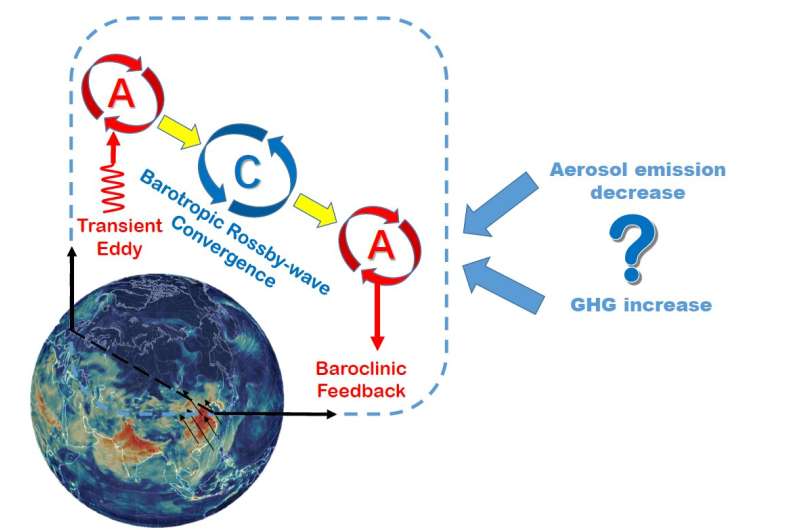Future aerosol emission reductions will worsen atmospheric diffusion conditions in eastern China

As one of the world's most densely populated regions, eastern China has been plagued by air pollution. The future projection of atmospheric diffusion conditions conducive to extreme haze events over eastern China is therefore of great importance for government emission regulations and public human health.
"Under the RCP8.5 scenario (a high emissions scenario), while the warming caused by the increase of greenhouse gases dominates, the effects induced by aerosol emissions reduction cannot be ignored. The effects of global change on China's atmospheric diffusion conditions have been widely studied in recent years. But, studies on the effects of aerosol emissions reduction on atmospheric diffusion conditions is still lacking," explains Weiyang Feng, from the group of Prof. Minghuai Wang, Nanjing University.
In order to fill this knowledge gap, Feng and her coauthors studied the changes of atmospheric diffusion conditions under the RCP8.5 scenario on the basis of three sets of single-model ensemble experiments from 2006-2100, and further explored the contributions from aerosol emissions reduction and increased greenhouse gases. The results have been recently published in Atmospheric and Oceanic Science Letters.
"Output from the Community Earth System Model large ensemble experiments allows us to examine the changes of extreme events under different future emission scenarios," Feng says.
They found that the relative strength of haze events in the North China Plain region has increased under the RCP8.5 scenario, induced by a stronger and longer-lasting anticyclone anomaly in eastern China. The strengthened anticyclone anomaly is mainly induced by increased northern wave train convergence and the longer duration of the anticyclone anomaly is mainly induced by stronger local feedback from the basic state. It was found that the climate effects induced by aerosol reduction plays a leading role in the anticyclone change in eastern China, while the effects from increased greenhouse gases are small.
"Future aerosol emissions reduction can induce deteriorating diffusion conditions, suggesting more stringent regulations on aerosol emissions in China are needed to meet air quality standards," Feng concludes.
More information: Weiyang FENG et al, Intraseasonal variation and future projection of atmospheric diffusion conditions conducive to extreme haze formation over eastern China, Atmospheric and Oceanic Science Letters (2020). DOI: 10.1080/16742834.2020.1745054
Provided by Chinese Academy of Sciences




















